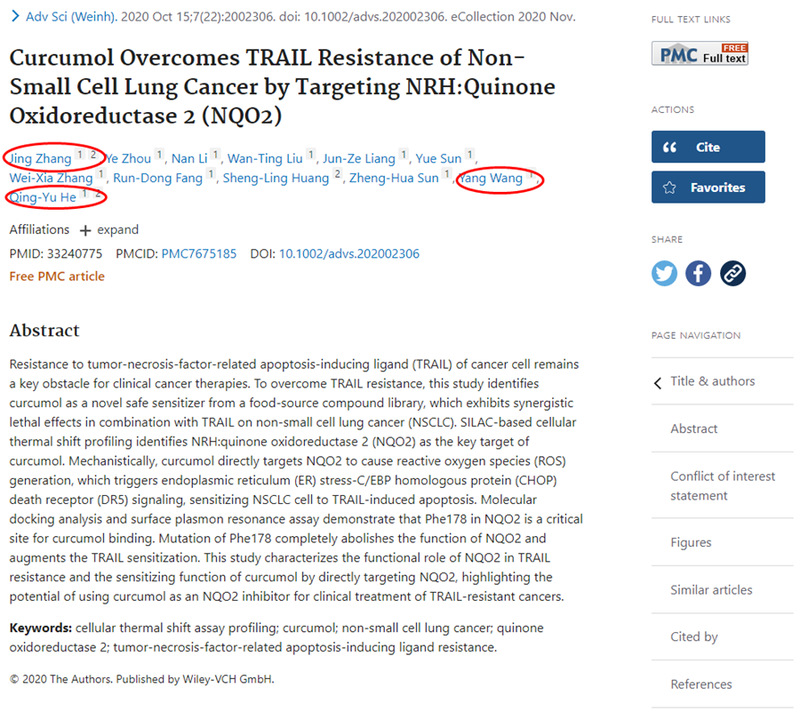- ABOUT JNU
- ADMISSION
-
ACADEMICS
- Schools and Colleges
-
Departments and Programs
- Arts College of
- Chinese Language and Culture College of
- Economics College of
- Electrical and Information Engineering College of
- Foreign Studies College of
- Information Science and Technology College of
- Environment School of
- Humanities School of
- International Business School
- International Studies School of
- Journalism and Communication College of
- Law School
- Liberal Arts College of
- Life Science and Technology College of
- Management School of
- Marxism School of
- Medicine School of
- Pharmacy College of
- Physical Education School of
- Science and Engineering College of
- Shenzhen Tourism College
- Research Institute
- Research Center
- Programs in English
- Majors
- Study Abroad
- Online Learning
- RESEARCH
- CAMPUS LIFE
- JOIN US
Latest News
JNU team publishes another important paper in Advanced Science
Date: March 16, 2021
Source: Biochemistry Department, College of Life Science and Technology
Prof. He Qingyu and his research team from JNU's College of Life Science and Technology have reported a breakthrough in clinical cancer therapies, which has been published in the journal Advanced Science.
The research revealed a new sensitization mechanism for small molecule curcumol overcome tumor-necrosis-factor-related apoptosis-including ligand (TRAIL) resistance to non-small cell lung cancer (NSCLC) based on thermal stability target identification technology. It found that curcumol can significantly sensitize NSCLC without obvious toxic side effects to promote TRAIL to kill tumor cells to the greatest extent, and elucidated the molecular mechanism of curcumol by targeting quinone oxidoreductase 2 (NQO2) to sensitize TRAIL-resistant tumor cells.

Continuing the receptor reconstruction strategy of tumor cells, the study discovered the NQO2, a key reconstruction molecule of the TRAIL receptor DR5 (death receptor), by using protein thermal stability target identification and mass spectrometry, and clarified this protein's TRAIL tolerance. The protein's expression in clinical tumors will provide important reference for the clinical benefits and effectiveness of curcumol and TRAIL.
The application of curcumol and TRAIL in the preparation of anti-tumor combination drugs proposed in this research has been granted patent number 201810802651.0.
The first author of this research is postdoctoral fellow Jing Zhang. Associate researcher Yang Wang of He's team is the co-corresponding author.
This research was supported by National Key Research and Development Program of China (2017YFA0505100), the National Natural Science Foundation of China (31770888), the Natural Science Foundation of Guangdong (2019A1515010196,2019A1515110597), the China Postdoctoral Science Foundation (2018M643372) and JNU's Scientific Research Cultivation and Innovation Foundation (31770888).
Link to paper:https://pubmed.ncbi.nlm.nih.gov/33240775/
NEWS
- About the University
- Quick Links
Copyright © 2016 Jinan University. All Rights Reserved.




